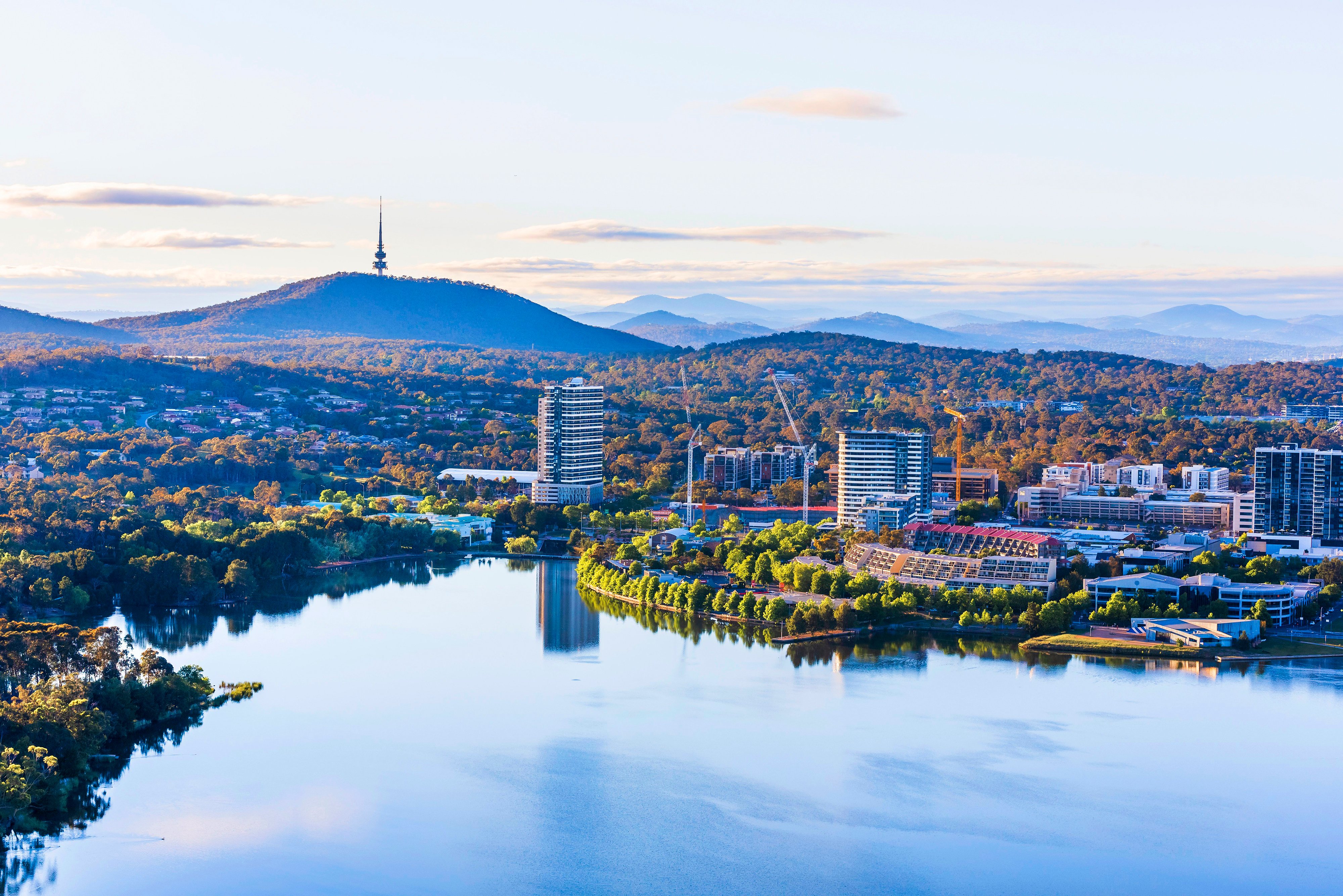Features > Property News & Insights > Housing Trends
Canberra – 2nd most affordable for rent, yet struggles persist

Canberra has taken the title of the second most affordable capital city to rent in, but not everyone is finding the market to be accommodating.
The annual Rental Affordability Index, produced by National Shelter and SGS Economics and Planning, was released last week, and Canberra was a glimmer of light in a worsening affordability crisis.
The ACT received a score of 125 on the Rental Affordability Index, where anything scored under 50 indicates extremely unaffordable rents, and a score over 121 indicates acceptable rents. The report analyses rents against a range of income scenarios, adjusting the score accordingly.

Canberra was ranked in the ‘acceptable rent’ range for the average rental household in the ACT, which has a gross annual income of $126,248 - the highest in Australia.

It’s a vast improvement on last year’s figures when Canberra received a score of 121, which was the city’s lowest score since 2013.
The title of the second most affordable capital city for renters can be somewhat attributed to an improvement in rent prices and wage growth, but as the report notes, the greatest factor is the deteriorating affordability across the rest of the nation.

“With an RAI score of 125, the ACT is one of only two regions where rental affordability improved in 2023, along with Greater Hobart. It is now the second most affordable capital city (an outcome which is largely due to the decline of other cities), with rents that are acceptable to the average ACT rental household,” read the report.
While the average asking rent might be comfortable for those receiving the average (exceptionally high) household income in the ACT, it’s a different story for renters in lower-income households.
A pensioner couple relying on the aged pension plus an additional $300 a fortnight from assumed casual employment are likely to find the ACT rental market ‘severely unaffordable’, with a score of just 59.
Single parents on a part-time income plus government benefits are also likely to experience rental stress, for whom Canberra scored just 45, making rentals extremely unaffordable for this cohort.
Even a single-income couple with children is at risk of rental stress, despite earning an average of $104,505 per annum. For this cohort, ACT rentals were scored at 107, which is equivalent to ‘moderately unaffordable’.

Despite the dire outlook for lower-income households, the ACT still presents a compelling picture for renters, compared to other capital cities.
Sydney renters are faced with harsher affordability constraints, with the average renting household forced to devote almost 30 per cent of its income to rent costs. Greater Sydney received a score of 104, rendering the market ‘moderately unaffordable’ for the average renting household, which receives an average of $117,000 of income, annually.
Greater Brisbane doesn’t fare much better either, receiving a score of 108, landing them too in the ‘moderately unaffordable’ category.
While the ACT has claimed the 2nd spot for rental affordability, there is a catch - Canberra’s central suburbs are still unaffordable.
“The spatial patterns of affordability within the city have changed little over the last year. In 2023, areas near Tuggeranong and Gungahlin returned to Acceptable levels of rent. However, in central Canberra, every suburb is now Moderately Unaffordable,” read the report.
The data mostly painted a dire picture for Australian renters, with single-income couple households with children (living off an average income of almost $105,000) seriously limited in affordable options.
All capital cities received a ranking of ‘moderately unaffordable’, except for Sydney, which was bluntly ranked as ‘unaffordable’.
Declining rental affordability has wide-reaching implications. It forces households on lower incomes to live in areas further from important infrastructure, like transport, healthcare, workplaces, and support networks. It also forces renters to make the difficult choice to move away from family and friends.
The decline in affordability is concerningly widespread, with Melbourne, Sydney, Brisbane, and Adelaide now at their “least affordable point since 2011,” according to the report.
Shelter NSW has called for action.
“Naturally, we are calling for a greater commitment to social housing; requiring the planning system to deliver Affordable Rental Housing; the winding back of Short Term Rentals, and the comprehensive reform of the NSW private rental system, consistent with our key priorities,” said Shelter NSW.
And with the rapidly rising costs that Australian renters are currently facing, it’s a valid call.
Stay Up to Date
with the Latest Australian Property News, Insights & Education.




.png?width=292&height=292&name=Copy%20Link%20(1).png)
 SIGN UP FOR FREE NEWSLETTER
SIGN UP FOR FREE NEWSLETTER








.jpg?width=1920&height=1080&name=Warning%2c%20You%20Might%20Be%20Facing%20Higher%20Taxes%20Soon%20(1).jpg)





.png?width=1920&height=1080&name=Rate%20Drops%20Signal%20BIGGEST%20Property%20Boom%20in%20DECADES%20(1).png)

.jpg?width=1920&height=1080&name=Labor%20vs%20Liberal%20These%20Housing%20Policies%20Could%20Change%20the%20Property%20Market%20Forever%20(1).jpg)
.jpg?width=1920&height=1080&name=QLD%20Slashes%20Stamp%20Duty%20Big%20News%20for%20Investors%20%26%20Home%20Buyers%20(1).jpg)
.jpg?width=1920&height=1080&name=Trump%20Just%20Slapped%20Tariffs%20%E2%80%93%20Here%E2%80%99s%20What%20It%20Means%20for%20Australia%20(1).jpg)
.jpg?width=1920&height=1080&name=Federal%20Budget%202025%20More%20Debt%2c%20No%20Housing%20%E2%80%93%20Here%E2%80%99s%20What%20You%20Need%20to%20Know%20(1).jpg)
.jpg?width=1920&height=1080&name=Australias%20Housing%20Crisis%20is%20about%20to%20get%20MUCH%20Worse%20(New%20Data%20Warns).jpg)
%20(1).jpg?width=1920&height=1080&name=Australias%20RENTAL%20CRISIS%20Hits%20ROCK%20BOTTOM!%20(2025%20Update)%20(1).jpg)
%20(1).png?width=1920&height=1080&name=Is%20Adelaide%20Still%20a%20Good%20Property%20Investment%20(2025%20UPDATE)%20(1).png)
.jpg?width=1920&height=1080&name=RBA%20Shocks%20with%20Rate%20Cuts!%20What%E2%80%99s%20Next%20for%20Property%20Investors%20(1).jpg)
%20(1).jpg?width=1920&height=1080&name=I%20Predict%20The%20Feb%20Rate%20Cut%20(My%20Price%20Growth%20Prediction)%20(1).jpg)
.png?width=1920&height=1080&name=Why%20Property%20Prices%20Will%20Rise%20in%202025%20Market%20Predictions%20(1).png)
.jpg?width=1920&height=1080&name=Why%20Investors%20Are%20Choosing%20Apartments%20Over%20Houses%202%20(1).jpg)
.jpg?width=1920&height=1080&name=Why%20Rate%20Cuts%20Will%20Trigger%20A%20Property%20Boom%20(1).jpg)
.jpg?width=1920&height=1080&name=Retire%20On%202Million%20With%20One%20Property%20(Using%20SMSF).jpg)
.jpg?width=1920&height=1080&name=4%20Reasons%20Why%20You%20Should%20Invest%20in%20Melbourne%20Now%20(1).jpg)
%20(1).jpg?width=1920&height=1080&name=Old%20Property%20vs%20New%20Property%20(Facts%20and%20Figures%20Revealed)%20(1).jpg)
%20(1).jpg?width=1920&height=1080&name=Will%20The%20New%20QLD%20Govt%20Create%20a%20Property%20Boom%20or%20Bust%20(My%20Prediction)%20(1).jpg)
%20Scott%20Kuru%20(1).jpg?width=1920&height=1080&name=Inflation%20Hits%20Three-Year%20Low%20(Will%20RBA%20Cut%20Rates%20Soon)%20Scott%20Kuru%20(1).jpg)
.jpg?width=1920&height=1080&name=How%20to%20Buy%20Investment%20Property%20Through%20SMSF_%20The%20Ultimate%20Guide%20(1).jpg)
.jpg?width=1920&height=1080&name=Victoria%20Slashes%20Stamp%20Duty%20Melbourne%20Set%20to%20Boom%20Scott%20Kuru%20(1).jpg)
.png?width=1571&height=861&name=Are%20Foreign%20Buyers%20Really%20Driving%20Up%20Australian%20Property%20Prices%20(1).png)
.jpg?width=1920&height=1080&name=The%20Single%20Factor%20That%20Predicts%20Property%20Growth%20Regions%20(1).jpg)
%20Scott%20Kuru%20(1).jpg?width=1920&height=1080&name=My%20Prediction%20On%20Rates%20%26%20Negative%20Gearing%20(Market%20Crash)%20Scott%20Kuru%20(1).jpg)

-1.png?width=1920&height=1080&name=Major%20Banks%20Cut%20Rates%20Will%20RBA%20Follow%20Suit%20(Sept%20Rate%20Update)-1.png)
%20Scott%20Kuru-1.png?width=1920&height=1080&name=Rate%20Cut%20Coming%20What%20New%20Zealands%20Move%20Means%20for%20Australia%20(Sept%20Prediction)%20Scott%20Kuru-1.png)
%20(1).jpg?width=1920&height=1080&name=Buy%20when%20the%20interest%20rates%20are%20high!%20(Why%20you%20must%20buy%20now!)%20(1).jpg)
.jpg?width=1920&height=1080&name=Carms_Revised%20Taxes%20Due%20Aug%209%20YT%20Thumbnail02%20(1).jpg)
.jpg?width=1920&height=1080&name=Carms_Too%20Little%20Too%20Late%20Aug%207%20YT%20Thumbnail01%20(1).jpg)









.jpg?width=1920&height=1080&name=Carms_Rate%20Drop%20In%20July%20Jun%2010%20YT%20Thumbnail02%20(1).jpg)
.jpg?width=1920&height=1080&name=Carms_Own%20a%20Property%20V6%20Jun%205_YT%20Thumbnail%20(1).jpg)









.png?width=1920&height=1080&name=Artboard%201%20(3).png)






.jpg?width=1920&height=1080&name=YT%20thumbnail%20%20(1).jpg)

